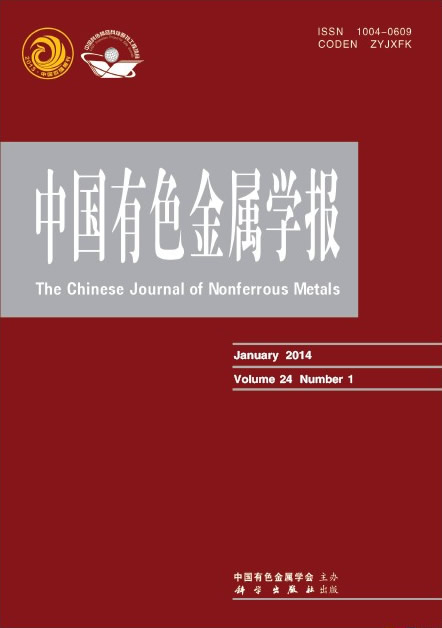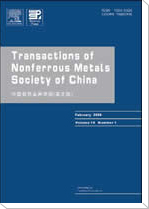中国有色金属学报(英文版)
Transactions of Nonferrous Metals Society of China
| Vol. 19 No. 5 October 2009 |
(1. School of Materials Science and Engineering, Central South University, Changsha 410083, China;
2. Powder Metallurgy Research Institute, Central South University, Changsha 410083, China;
3. State Key Laboratory of Powder Metallurgy, Central South University, Changsha 410083, China;
4. College of Mechanical Engineering, Xiangtan University, Xiangtan 411105, China)
Abstract:The potential energy sequences of characteristic atoms were separated out by nine potential energy E-functions on the basis of larger experimental heats of formation of the L10-AuCu and L12-AuCu3 compounds only. According to these potential energy sequences of characteristic atoms, the potential energies and heats of formation of disordered Au1−xCux alloys were calculated by corresponding E-functions at 0 K; and the potential energies, heats of formation and critical Tc-temperatures of the order-disorder transitions of L10-AuCu, L12-Au3Cu and L12-AuCu3 compounds, Au3Cu-, AuCu- and AuCu3-type ordered alloys with maximal ordering degrees were also calculated at 0 K. The results obtained by both the first and present parts of this investigation were compared. Comparing the results obtained by nine E-functions, the 5th E(x, 0, σ) function may be chosen for describing thermodynamic properties of the compounds, ordered and disordered phases and for establishing the phase diagram of the Au-Cu system in the future.
Key words: systematic science of alloys; Au-Cu system; potential energy; heat of formation; phase transition temperature


